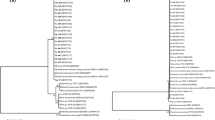Abstract
In a series of microcosm and field studies, we have observed that over time V. cholerae and related human pathogens enter a viable but non-culturable state. Direct viable counts by epifluorescent microscopy are consistently higher than corresponding plate counts. Thus, the assumption that microorganisms, including pathogens, “die-off” or “decay” in the marine environment must be re-evaluated, since stressed or nutrient starved cells are unable to grow and be enumerated by standard plate count methods. Furthermore, animal passage reveals pathogenicity persisting for such “non-viable”cells. Indirect immunofluorescent microscopy offers a more sensitive detection system for environmental sampling for human pathogens and therefore, a more valid estimation of population size. One implication of these findings for the release of genetically engineered organisms is that highly specific methods of detection and monitoring are required, with direct detection by fluorescent antibody the most reliable at the present time.
Similar content being viewed by others
References
Xu, H.S., Roberts N., Singleton F.L., Atwell, R.W., Grimes D.J. and Colwell, R.R. 1982. Survival and viability of nonculturable Escherichia coli and Vibrio cholerae in the estuarine and marine environment. Microb. Ecol. 8: 313–323.
Xu H.S., Roberts, N.C., Adams, L.B., West, P.A., Siebeling R.J., Huq, A., Huq M.I., Rahman, R. and Colwell R.R. 1984. An indirect fluorescent antibody staining procedure for detection of Vibrio cholerae serovar O1 cells in aquatic environmental samples. J. Microbiol. Methods 2: 221–231.
Colwell R.R., Xu H.S., Roberts N., Siebeling S., Huq, A., West P., Huq, I., Aziz, K.M.S., Maneval, D., Brayton P., Roszak, D. and MacDonell, M. 1984. Ecology and systematics of Vibrio cholerae in endemic and non-endemic areas. U.S.-Japan Cholerae Conference, Washington, D.C.
Kogure K, Simidu, U. and Taga, N. 1979. A tentative direct microscopic method for counting living marine bacteria. Can. J. Microbiol. 25: 415–420.
Hobbie J.E., Daley, R.J. and Jasper, S. 1977. Use of Nuclepore filters for counting bacteria by fluorescence microscopy. Appl. Environ. Microbiol. 33: 1225–1228.
Palmer, L.M., Baya, A.M., Grimes D.J. and Colwell R.R. 1984. Molecular genetic and phenotypic alteration of Escherichia coli in natural water microcosms containing toxic chemicals. FEMS Microbiol. Lett. 21: 169–173.
Roszak D.B., Grimes, D.J. and Colwell, R.R. 1984. Viable but non-recoverable stage of Salmonella enteritidis in aquatic systems. Can. J. Microbiol. 30: 334–338.
Spira W., Sack R.B. and Froehlich, J. 1981. Simple adult rabbit model for Vibrio cholerae and enterotoxigenic Escherichia coli diarrhea. Infect. Immun. 32: 739–747.
Macrina, F.L., Kopecko, D.J., Jones, K.R., Ayers, D.J. and McCowen, S.M. 1978. A multiple plasmid-containing Escherichia coli strain: convenient source of size reference plasmid molecules. Plasmid 1: 417–420.
Baker R.M., Singleton F.L. and Hood, M.A. 1983. The effects of nutrient deprivation on Vibrio cholerae. Appl. Environ. Microbiol. 46: 930–941.
Hoppe, H.G. 1976. Determination and properties of actively metabolizing heterotrophic bacteria in the sea, investigated by means of autoradiography. Mar. Biol. (Berlin) 36: 291–302.
Jones J.L. and Rhodes-Roberts M.E. 1981. The survival of marine bacteria under starvation conditions. J. Appl. Bacteriol. 50: 246–258.
Mitchell, R. 1968. Factors affecting the decline of non-marine microorganisms in seawater. Water Res. 2: 534–543.
Morita, R.Y. 1983. Starvation-survival of heterotrophs in the marine environment. Adv. Microb. Ecol. 6: 171–198.
Novitsky, J.A. and Morita, R.Y. 1977. Survival of a psychrophilic marine Vibrio under long-term nutrient starvation. Appl. Environ. Microbiol. 46: 930–941.
Novitsky, J.A. and Morita, R.Y. 1978. Possible strategy for the survival of marine bacteria under starvation conditions. Mar. Biol. 48: 289–294.
Stevenson, L.H. 1978. A case for bacterial dormancy in aquatic systems. Microb. Ecol. 4: 127–133.
Tabor P.S., Ohwada, K. and Colwell, R.R. 1981. Filterable marine bacteria found in the deep sea: distribution, taxonomy and response to starvation. Microb. Ecol. 7: 67–83.
Russek E. and Colwell, R.R. 1983. Computation of most probable numbers (MPN). Appl. Environ. Microbiol. 45: 1646–1650.
Monsur, K.A. 1961. A highly selective gelatin-taurocholate-tellurite medium for the isolation of Vibrio cholerae. Trans. R. Soc. Trop. Med. Hyg. 55: 440–442.
Mach, P.A. and Grimes, D.J. 1982. R-Plasmid transfer in a wastewater treatment plant. Appl. Environ. Microbiol. 44: 1395–1403.
Kado, C.I. and Liu, S.-T. 1981. Rapid procedure for detecting isolation of large and small plasmids. J. Bacteriol. 145: 1365–1373.
Author information
Authors and Affiliations
Rights and permissions
About this article
Cite this article
Colwell, R., Brayton, P., Grimes, D. et al. Viable but Non-Culturable Vibrio cholerae and Related Pathogens in the Environment: Implications for Release of Genetically Engineered Microorganisms. Nat Biotechnol 3, 817–820 (1985). https://doi.org/10.1038/nbt0985-817
Received:
Accepted:
Issue Date:
DOI: https://doi.org/10.1038/nbt0985-817
- Springer Nature America, Inc.
This article is cited by
-
Ecological Impacts of Aged Freshwater Biofilms on Estuarine Microbial Communities Elucidated Through Microcosm Experiments: A Microbial Invasion Perspective
Current Microbiology (2022)
-
Viable but nonculturable bacteria and their resuscitation: implications for cultivating uncultured marine microorganisms
Marine Life Science & Technology (2021)
-
Near real-time enumeration of live and dead bacteria using a fibre-based spectroscopic device
Scientific Reports (2019)
-
An antibacterial platform based on capacitive carbon-doped TiO2 nanotubes after direct or alternating current charging
Nature Communications (2018)
-
Discovery and control of culturable and viable but non-culturable cells of a distinctive Lactobacillus harbinensis strain from spoiled beer
Scientific Reports (2018)




